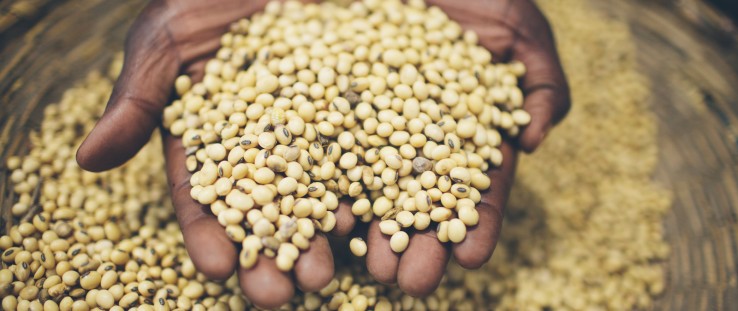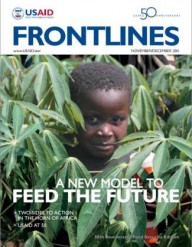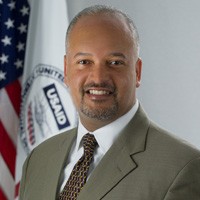 Producing high quality seeds
USAID
Producing high quality seeds
USAID
 Producing high quality seeds
USAID
Producing high quality seeds
USAID
At USAID, we’re doing business differently. And that includes how we help other countries feed their people and drive economic growth.
As the head of USAID’s new Bureau for Food Security (BFS), I’m thrilled to be able to celebrate our work promoting global food security in this month’s edition of FrontLines. I’m proud to be a part of BFS, which was created in part to lead the U.S. Government’s Feed the Future initiative, a whole-of-government, multi-agency effort to address the root causes of hunger that limit the potential of millions of people.
Reflecting the values of the American people, President Barack Obama announced Feed the Future at the 2009 G8 Summit in L’Aquila, Italy, where global leaders committed to “act with the scale and urgency need-ed to achieve sustainable global food security.”
Why is there such urgency to achieve global food security? Because almost 1 billion people—more than one-seventh of the world’s population—suffer from chronic hunger, and each year more than 3.5 million children die from undernutrition. And because an estimated 70 percent of the poor in developing countries live in rural areas, where agriculture can be a key driver to foster economic growth, which in turn is one of the fundamental forces to transform the developing world and eradicate poverty.
Food security is also about so much more than just food—in addition to agriculture and nutrition, food security is inextricably linked to economic, environmental, and human security. By helping to sustainably feed communities in developing countries, we’re building a foundation to prevent crises that have the potential to lead to human conflict. We are also increasing our own national security here in the United States.
The current drought and famine in the Horn of Africa provides a stark illustration of why short-, medium- and long-term strategies to ensure food security are needed. USAID’s efforts, under the leadership of the Bureau for Democracy, Conflict and Humanitarian Assistance, to provide food and other emergency assistance to those in need must continue. But equally important, Feed the Future’s approach reflects our firmly held stance as development professionals that aid is not an end in itself; our goal is to help create conditions where it is no longer needed. A key approach of Feed the Future is working with partner countries and other donors to co-invest in selective, targeted regions that have the best chances of flourishing, and in value chains that have the greatest potential to alleviate poverty and end undernutrition. Feed the Future strategies are country-owned and country-led, fostering the kind of national pride and enduring spirit exhibited by our inaugural Feed the Future “Hunger Hero” David Nyange.
Our work to create this lasting change within focus countries centers around important cross-cutting issues such as empowering women, as well as cross-sector collaboration with both traditional and non-traditional partners.
USAID’s work over the past 50 years has resulted in some great successes in agriculture and food security many of them previously untold. In addition to the progress outlined in this issue, we’ve also added 62 new agriculture Foreign Service Officers; expanded the role of the presidentially appointed Board for International Food and Agricultural Development, or BIFAD; and continued to promote new and innovative scientific research.
Our goals are ambitious, as they should be for an issue that goes to the heart of USAID’s development agenda. Over the next five years, Feed the Future’s interagency partners together will aim to help an estimated 18 million vulnerable women, children, and family members—mostly smallholder farmers—escape hunger and poverty. As Secretary of State Hillary Rodham Clinton has said: “The question is not whether we can end hunger, but whether we will.”










Comment
Make a general inquiry or suggest an improvement.